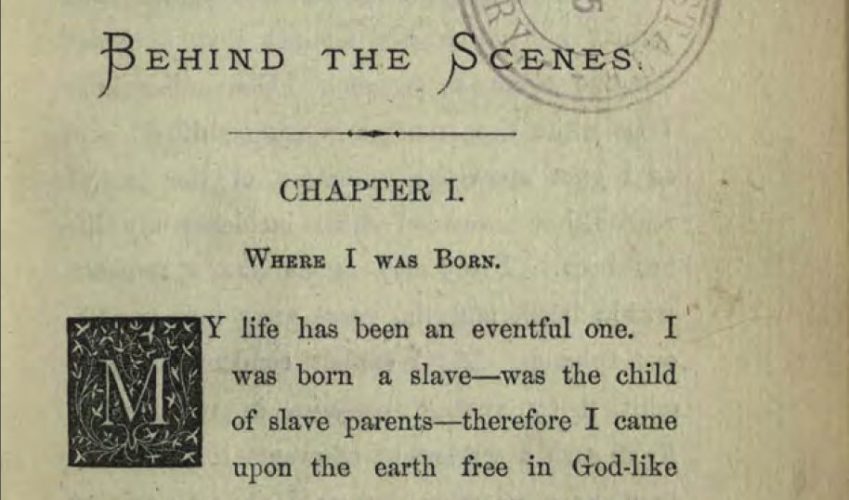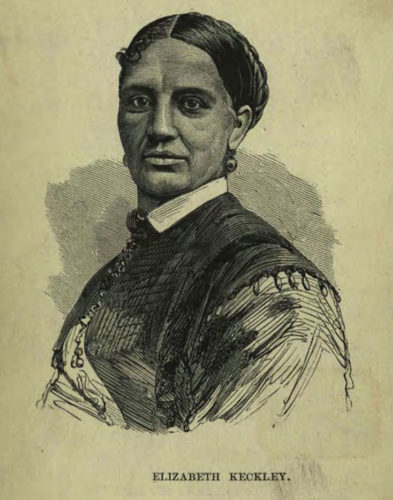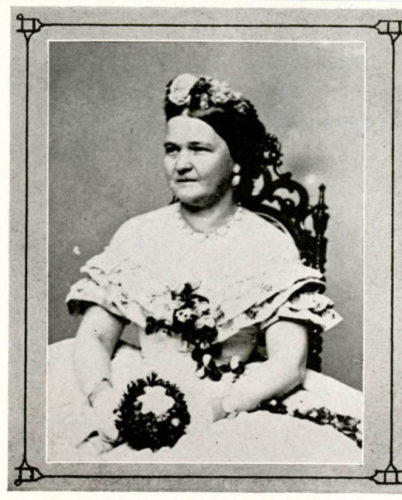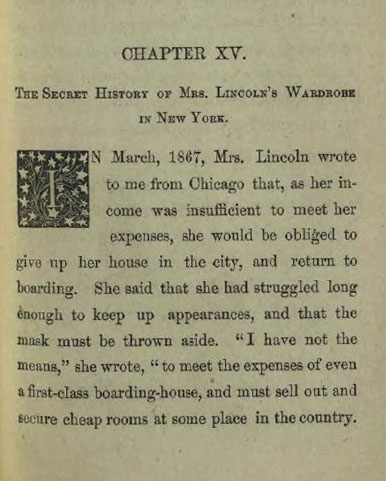Elizabeth Keckley’s “Behind the Scenes”

Elizabeth Keckley was an activist, renowned dressmaker, and successful businesswoman, and an associate of prominent Washingtonians during the mid-1860s. Keckley was also a woman, and black, making the story of her rise, and eventual fall, thrilling and heartbreaking by turns.

Keckley was born a slave in 1818, and spent 34 years in servitude. During that time, her ownership was transferred from member to member of the Armistead Burwell family, moving her from Virginia to North Carolina to St. Louis. She was beaten regularly, and was raped by a prominent white member of society, bearing his child in 1839. In 1855, after two years of begging and three years to raise the $1200 necessary to purchase her freedom and that of her son – obtained partially from dressmaking and partially through loans – she became a free woman.
After repaying the money loaned to her, Keckley moved to Baltimore and set up a dressmaking business and school. When it became clear that her Baltimore businesses would not provide her with sufficient funds, she took what little money she had and moved to Washington, D.C., in search of opportunities. There, she found seamstress work with a shop owner who catered to local luminaries. The women of Washington adored Keckley’s designs and her popularity grew. Soon, Keckley counted Mary Custis Lee, the wife of Robert E. Lee, and Varina Davis, who was married to Jefferson Davis, as clients. It was also through these relationships, and through Keckley’s talent, that, in 1861, she was introduced to Mary Todd Lincoln, wife of the newly-elected President Abraham Lincoln, about whom Keckley would go on to focus much of her memoir, and through whom Keckley would ultimately fall from grace.

In the preface to her memoir, Keckley indicates that she has made every attempt to be fair and evenhanded. Lincoln, she writes, had “forced herself into notoriety,” with her extravagances and what was considered outrageous behavior. By using her memoirs to invite the public “behind the scenes” and into the private life of Mrs. Lincoln, however, she hoped to demonstrate Mrs. Lincoln’s intentions, which were always good, saying, “An act may be wrong judged purely by itself, but when the motive that prompted the act is understood, it is construed differently.”
Every indication is that she planned to honor Lincoln, painting her in a positive light. Indeed, Mrs. Lincoln and Keckley, whom Mrs. Lincoln called “Lizzie,” were friends and confidantes. She sat with the Lincolns’ son, Willie, as he was dying, and it was Keckley for whom Mrs. Lincoln called after the president had been assassinated. When Mrs. Lincoln moved to Chicago after her husband’s death, she continued to correspond with her friend. When she found herself overwhelmed by debt due to extravagant spending while in the White House, she came up with a scheme to travel to New York to sell her dresses and raise money, and asked Keckley to help her. Keckley did so, continuing to work on Mrs. Lincoln’s behalf after the widow returned home despite having to close her business to do so. And though Lincoln promised to pay Keckley after inheriting $36,000 from her husband’s estate, money never arrived.

Keckley found herself in dire financial straits, her reputation sullied by what came to be known as the “Old Clothes” affair. She decided to write her memoirs, claiming, as previously mentioned, that understanding motives might encourage the public to see Mrs. Lincoln, and herself, in a better light. Instead, the memoirs destroyed her. Though she had long been viewed as polished and distinguished and had associated with the upper classes of white society, now she had violated contemporary codes of race and class, and she suffered tremendously from the backlash. Her career never recovered, and neither did her friendship with Lincoln, who terminated their relationship and referred to Keckley as the “colored historian.”
Keckley eventually joined the faculty of Wilberforce University, becoming the head of the Department of Sewing and Domestic Service, but a stroke she suffered shortly thereafter ended her working life. She then moved to the National Home for Destitute Colored Women and Children, a home funded by the Contraband Relief Organization, which she had founded in 1862. It was there that Keckley died in 1907.
Elizabeth Keckley has been seen as a character in plays, books and movies, including Steven Spielberg’s film Lincoln, Jennifer Chiaverini’s novel Mrs. Lincoln’s Dressmaker, and the plays Mary T. & Lizzy K. and A Civil War Christmas. The dress Mary Todd Lincoln wore to her husband’s second inauguration, believed to be one made by Keckley, is displayed at the Smithsonian National Museum of American History. A quilt that Keckley made, using scraps from Lincoln’s dresses, is held by Kent State University.
On Ohio Memory, you may view the April 22, 1868, issue of the Ohio State Journal, which contains excerpts of Keckley’s book on page 2 and describes it as “a budget of gossip by Mrs. Lincoln’s Colored Milliner,” focusing a great deal on those passages which portray Mrs. Lincoln in the worst light. You may also read the memoir in its entirety there, divided into two parts; part one, which includes the front cover through page 198 can be found here, and the remainder of the journal can be found here. Please note that, if the parts do not display in the preview window for the book, you may need to download to view them, but they are safe to download, and are entirely worth reading in order to fully appreciate Elizabeth Keckley’s fascinating, and devastating, story.
Thank you to Shannon Kupfer, Digital Initiatives Librarian at theState Library of Ohio, for this week’s post!



Leave a Reply
You must be logged in to post a comment.